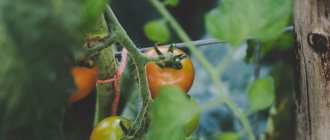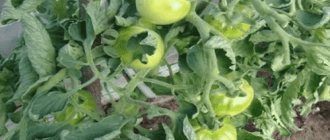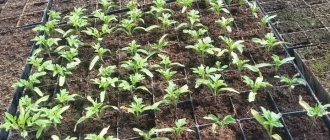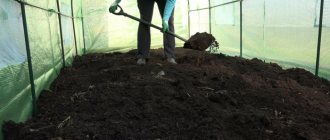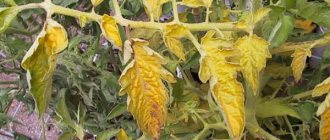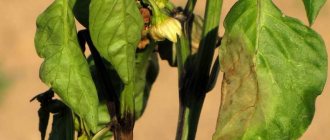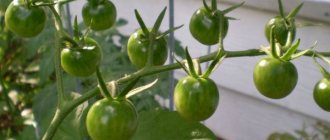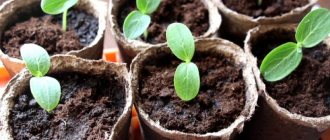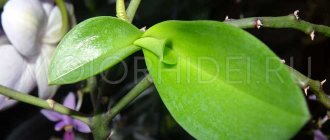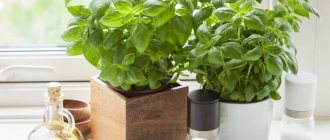When an orchid shoot is discovered, it is real luck, since exotic plants are very demanding to care for and are not always ready for reproduction. To avoid making mistakes with transplantation, the florist will be helped by knowledge about the places of origin and the rules for separating buds. You have to act with scrupulous caution so as not to destroy the flower.
How does the presence of shoots affect the life cycle of a plant?
Orchid babies are young daughter shoots that appear on the peduncle or at the roots of an adult plant. The shoots appear only if the mother flower is provided with good and timely care. This happens at high temperature and humidity in the room where the plant is located; it is also important to know that children appear only after it has flowered.
There is an opinion among flower growers that shoots on an orchid appear before it quickly withers: with the active growth of the children, the stem dries out and the subsequent death of the plant occurs. And in some cases this is exactly what happens, but the shoots can not only “kill” the mother plant, but also affect its life cycle.
In orchids, there are two types of dormancy: biological and forced, and it is the first of them that is affected by the appearance of shoots on the orchid. They appear when the plant’s period of active growth is coming to an end, and the end of the development of the children and the readiness to grow independently (i.e., at the moment when they need to be separated), marks the beginning of the dormant period - the time when the flower gains strength and its growth stops.
During the dormant period, new growth ripens and vegetative and flower buds form. That is, the appearance of babies on an orchid directly affects its life cycle (forces it to go on “rest” to gain strength), because the change between dormancy and active growth of a plant does not have a specific pattern and depends solely on external conditions: temperature, humidity, watering.
Read about how orchid babies appear and grow on the trunk, at the base and root, and what care is needed here.
Soil for planting
You can use both moss and pine bark. The first one will need to be irrigated every day, which is not entirely comfortable and is only suitable for those plantings that will be located in conditions of high moisture. Most preference is given to the final type, which makes it possible to acquire the most moisture-intensive soil.
The main thing is to take pieces of at least one centimeter, and not dust. You can buy bark in a special store for gardeners.
To ensure that aerial roots, which are highly sensitive to watering and fertilization, are protected, it is preferable to use two materials. The soil is made with clean pine bark, and sphagnum is placed on top.
Such a soil mixture makes it possible to reduce the orchid’s maintenance requirements. The gardener can irrigate the branch, including with hard water.
Photo
And this is what the baby (shoot) of the orchid looks like in the photo.
How to properly care for them?
- Temperature conditions. In order to stimulate the appearance and maintain active and proper development of the shoot on the orchid, in the summer season it is necessary to maintain the temperature from 21 to 31 degrees, and in winter - from 16 to 27 degrees. There are also upper and lower temperature limits, beyond which you should never go: below 13 degrees and above 33.
- Humidity. At any time of the year, it is recommended to maintain humidity at 50%, and spraying should be done only if the temperature regime is disturbed, no more than 3 times a week. In winter, such procedures should not be done under any circumstances.
- Lighting. Orchids and their children are not whimsical in terms of lighting, but they really do not like direct sunlight hitting them, so it is better to provide diffused light. And in winter, to stimulate the growth of shoots, you can use a fluorescent lamp, thereby providing a sufficient amount of light during the cold period.
- Watering. Moderate watering is recommended, which is guaranteed to prevent stagnation of moisture in the substrate, which affects the mother plant and, accordingly, its children.
- Fertilizer. The plant can be fed with fertilizers with a high nitrogen content to support the growth of children, and such fertilizers can also be used to stimulate their further appearance. There is no need to do this often, because the orchid takes most of its nutrients from the soil, so for growing it it is better to use one that is intended specifically for this plant.
Read about growing baby orchids here.
Possible difficulties
If you are planning to separate and transplant a baby orchid for its further growth, then you should familiarize yourself with the list of the most common possible difficulties that you may encounter during such procedures.
During transplantation, the plant may contract an infection. This not only ultimately leads to the appearance of serious diseases, but even to the death of the flower. To avoid such a problem, you should use only sterile scissors, a knife and pruning shears when working with young sprouts. Many gardeners are faced with the rotting of this capricious plant. To avoid these problems, you need to let the baby lie in the air for a while (about 30 minutes). After this, the sections will need to be treated with ground cinnamon or wood ash. Please note that if you cut a sprout too early, it will simply die
It is easy to distinguish a baby that is not yet ready for separation; the main thing is to pay attention to the condition of its roots. If several children appear on an orchid at once, then cutting them all at once is prohibited. This is due to the fact that the mother plant may die from the damage received.
First you will need to separate only one baby. It will be permissible to plant the second one after the cut area from the first part is completely overgrown.
Is it worth keeping it on the mother flower for a long time?
In most cases, the period for complete development of a shoot on an orchid takes about six months, and it can be either less or a little longer. During this time, leaves and roots appear on the baby, and it gains strength for independent life in a separate pot.
Namely, because for each child the timing is individual, then in order to know when it can be separated from the mother plant, you need to focus on its size: as soon as the roots in the amount of 2 - 3 pieces reach a length of 5 - 6 cm, or when they appear 4 – 5 leaves, can be transplanted into the substrate. Read about why baby orchids may lack roots and how to grow them here.
Growing orchids at home: when is the best time to replant?
to start breeding in the spring season.
, since after winter the plant awakens and is ready for active growth with renewed vigor. You can divide the plant during replanting or, if the roots are cramped in the pot and they come out.
How to propagate an orchid by dividing a rosette
Large, healthy orchids with 7-8 leaves are suitable for this method. Using a disinfected knife, cut off the top with 4-5 leaves and aerial roots.
. Plant the resulting shoot in a new pot. Sections must be processed.
The shoots are planted in a mixture of pine bark and sphagnum moss
. This is the most suitable soil for germination. Make sure the bark is dry, not wet.
Take good care of your escape. As soon as the roots grow, transplant them into a deeper container.
.
Is it necessary to separate from “mother”?
What to do if the orchid has sprouted a shoot on a stem or root, if they grew suddenly? Nothing bad will happen if the emerging shoots are not removed. Experienced gardeners can create entire interesting plants with several shoots on one mother, and others separate them to produce young copies of the previous orchid. The choice of one solution or another will depend solely on the preferences of the grower.
Sometimes, when the humidity in the room is above 50%, the roots of the shoots can become overgrown with moss, and then flower pots with a large number of holes are put on them to provide the roots with moisture and a comfortable temperature regime. In such a pot, the roots can curl inside it.
In some cases, the process falls off, and, as a rule, this is due to non-compliance with the conditions that are required for their active and proper development.
Stimulating root growth
If the baby appears on a stem, it is quite possible that it does not have roots, which are necessary for independent growth, and in this case it is necessary to resort to stimulating their appearance.
To do this, the base of the shoot is wrapped in damp moss and tied with thread. It is important to moisten the moss regularly; you can wrap it in cling film or a plastic bag (then you need to ventilate the baby daily, i.e. unwind the film and let the moss “breathe” for a while).
Place the orchid under diffused sunlight or a fluorescent lamp (in winter). This approach provides the high humidity necessary for the normal development of the lateral processes of the orchid.
Separation instructions
You need to cut the shoot from the peduncle with a gap of 1.5 cm, then you need to wait half an hour so that the cut areas dry out during this time, treat them with crushed activated carbon.
It is advisable to take a transparent plastic container with holes for draining water, and place the baby in it so that the root system is slightly below the level of the edge of the pot. Fill the container with soil; there is no need to compact it; just tap the edges of the container.
Important! You can water the planted shoot only after 3 to 4 days.
We invite you to watch a video on how to separate a baby from an orchid:
How to care for the mother flower?
Proper care of the mother plant directly determines whether children will appear on it at all. And therefore, the conditions for caring for the shoots that are described above are also intended for the orchid itself, because almost everything that it receives from the outside is given to its children, who are directly on it. Obviously, it is impossible to care for the shoots in one way and the mother plant in another.
Despite the fact that orchid babies are picky about growing conditions, the method of propagation with their help still remains one of the simplest. Only the correct temperature, watering, humidity and, of course, patience can give birth to a new beautiful plant that will delight with its aesthetic appearance. Now you know what to do if the orchid has released a shoot and how to care for it.
Further care
Before the shoot takes root and standard orchid care methods can be applied, the young plant must be provided with special conditions.
Certain recommendations should be followed:
- Starting from day 4 until complete rooting, watering is carried out with warm water as the substrate dries completely.
- Humidity must be maintained at least 70%;
- The temperature should not fluctuate more than between 20 and 23 °C.
Important! You can add a growth stimulator to the water for irrigation, but not earlier than 25-30 days after planting.
When the young orchid is completely rooted, it can be transferred to standard care and placed in a permanent place.
The leaves are not only sprayed, but also wiped
Standard care measures include moistening the soil, regular spraying and fertilizing. It is better to use fertilizers special for orchids. The fertilizing schedule is most often indicated in the instructions for the drug.
Orchids have won the hearts of many gardeners, and for some they have even become a hobby. In addition to the usual species, there are such interesting ones as phalaenopsis and dendrobium. These flowers are so beautiful that they can be forgiven for their high care requirements.
Propagation of orchids is also not a simple undertaking. To carry it out correctly and get a healthy young plant, you should properly prepare the tools and materials. But the main thing is to stock up on knowledge and patience.
